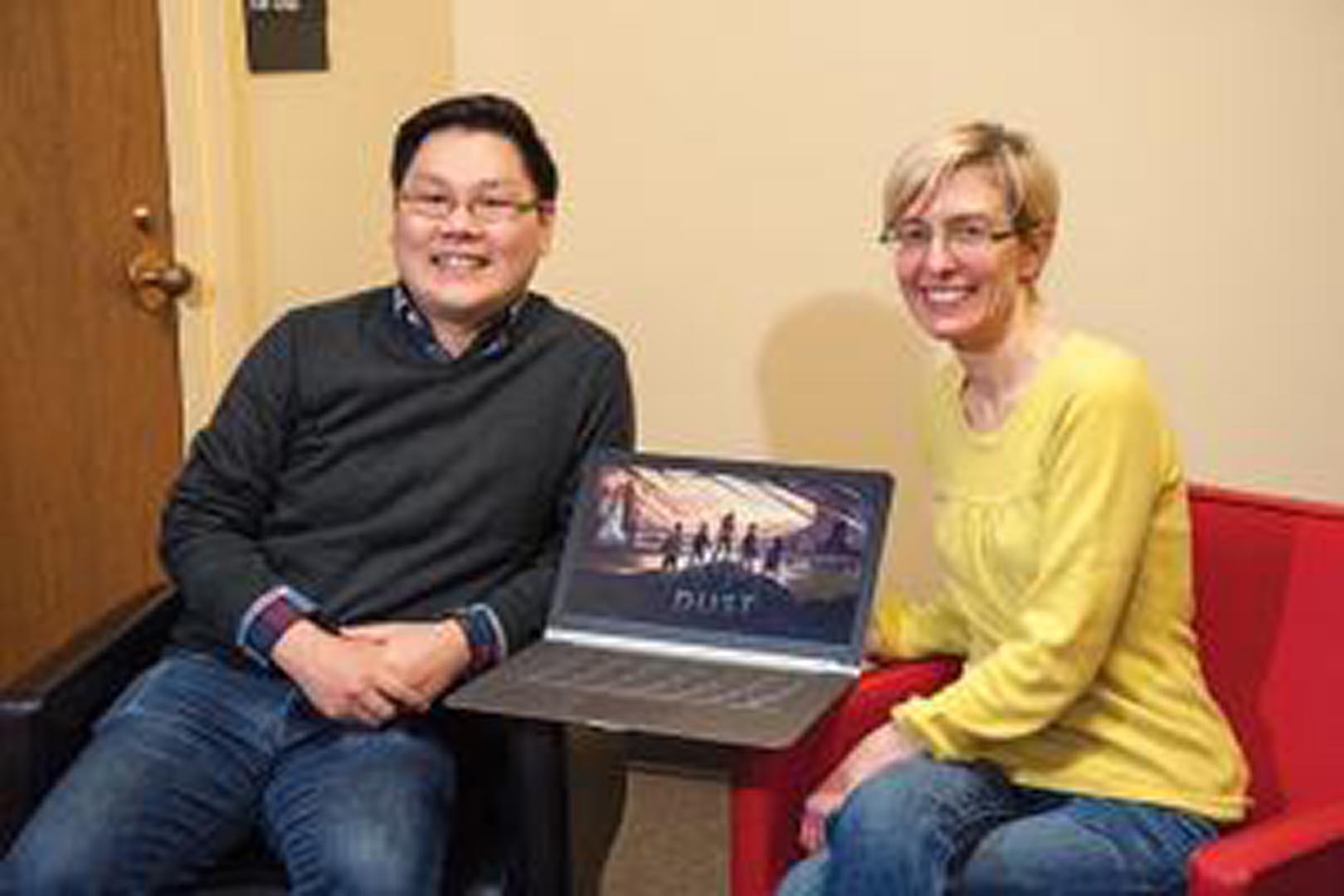College Researchers Design, Develop Alternate-Reality Game
February 12, 2015

Associate professor Kari Kraus, whose research interests include digital humanities, helped develop this new game to get teens interested in STEM.
By Morgan Eichensehr, The Diamondback.
A recently created virtual game takes place after a meteor shower, when adults on Earth lose consciousness and teen scientists must work to find a way to reverse the apocalyptic event.
That’s the premise behind DUST, the alternate-reality game designed and developed by information studies college researchers Kari Kraus and June Ahn. The team behind the project released the game Jan. 26.
“The dust disperses and all the adults have collapsed. That’s how the game opened,” Kraus said. “And that’s the mystery that players must now solve: What happened, are they asleep, are they in a coma, how can they be revived?”
DUST is a game designed to help teens ages 13 through 17 develop science, technology, engineering and mathematics skills, Kraus said. Players interact with virtual characters, search for clues, post in conversations about game theories and questions and use the scientific inquiry process to solve a mystery.
The game is a virtual seven-week experience, but players can join the virtual reality whenever they want.
Developed with the help of a $445,231 National Science Foundation grant, the game already has about 1,155 players.
The game experience aims to gather data about the players and promote STEM learning in an informal, interactive setting, said Ahn, a professor in the education college.
“When you typically think about education research, we think about how we need to make changes to schools and classrooms, but [the NSF] is funding us to do something more out-there and innovative,” Ahn said. “We are looking at how we can promote learning through stories and apps and social media and expanding our notion of learning from just inside the classroom to everywhere.”
To read more, click here.

